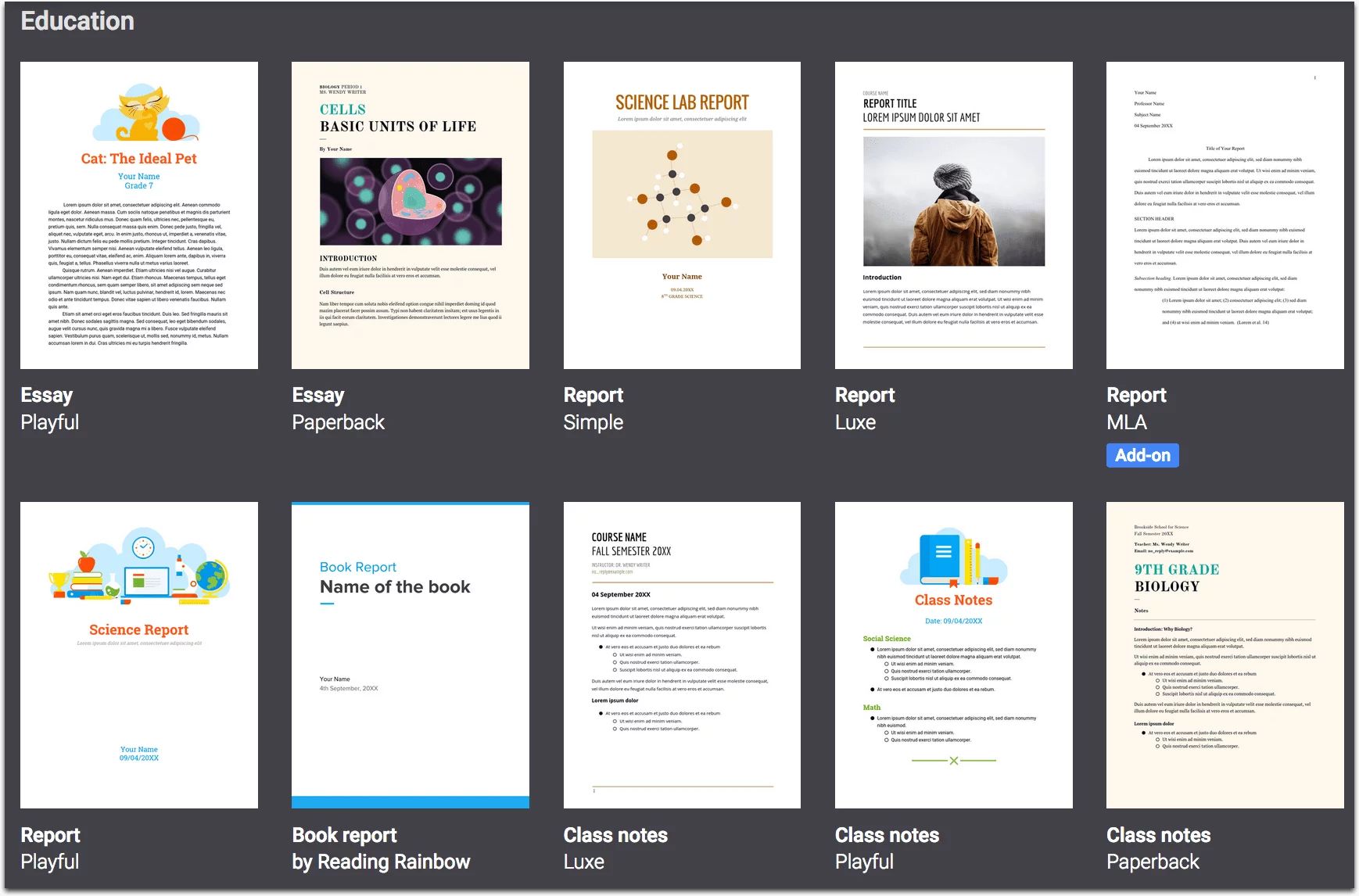Introduction
Welcome to this comprehensive guide on how to create an eBook for free! In today’s digital age, eBooks have become increasingly popular as a convenient and cost-effective way to share knowledge, stories, and information with a wide audience. Whether you’re an aspiring writer, a business professional, or simply someone with a passion for a particular subject, creating an eBook can be a rewarding endeavor.
Gone are the days when publishing a book required a hefty investment or the validation of traditional publishing houses. With the development of technology, self-publishing has become more accessible than ever before, allowing anyone with a computer and internet access to write and publish their own eBook.
In this guide, we will walk you through the step-by-step process of creating an eBook for free. From choosing a topic to formatting, designing, and publishing your eBook, we’ll provide you with the knowledge and tools you need to bring your ideas to life.
Whether you plan to create a fictional novel, a how-to guide, or a collection of recipes, the steps outlined in this guide can be tailored to suit any type of eBook you desire to create. By the end of this guide, you’ll have the confidence and skills to embark on your eBook creation journey.
So, let’s get started! Read on to learn about the exciting process of turning your ideas into a well-crafted eBook that can be enjoyed by readers around the world.
Step 1: Choosing a topic for your eBook
Choosing the right topic for your eBook is a crucial step in the creation process. Your topic should be something you are passionate about, as this will make the writing process more enjoyable and ensure that your enthusiasm shines through in your writing.
Start by brainstorming different ideas and subjects that you are knowledgeable or interested in. Consider your target audience and their needs or pain points. What knowledge or expertise can you offer them that will be valuable and relevant?
Researching market trends and popular topics can also help you identify areas with high demand. Look at similar eBooks and analyze their success. However, remember to put your unique spin on the topic to avoid being too similar to existing publications.
Once you have a list of potential topics, evaluate them based on their feasibility and marketability. Consider the level of competition, target audience size, and potential for monetization. It’s important to choose a topic that you are passionate about, but also one that has a viable market. Strike a balance between your interests and what the market wants.
It’s worth noting that a niche topic can often be more successful than a broad one. By targeting a specific audience or addressing a specific problem, you can position yourself as an expert in that area. This can lead to higher engagement and sales.
As you narrow down your options, consider your own expertise and experience in relation to the topic. Are you able to provide unique insights or valuable information that others may not have? This will help differentiate your eBook from others on the market and attract readers.
Finally, trust your gut feeling. If a certain topic excites you and resonates with your passion, it will likely resonate with readers as well. Remember, writing an eBook is a long process, so choose a topic that will keep you engaged and motivated throughout.
Once you have chosen a topic, you can move on to the next step: researching your topic in more depth. Through thorough research, you’ll be able to gather the necessary information and inspiration to create a well-informed eBook that will captivate your audience.
Step 2: Researching your topic
Researching your chosen topic is a crucial step in creating a well-informed and authoritative eBook. Regardless of whether you’re writing a fiction novel or a non-fiction guide, conducting thorough research will ensure that your content is accurate, relevant, and valuable to your readers.
Start by gathering reliable sources of information. This can include books, academic papers, articles, online resources, interviews, or even personal experiences. Make sure to gather information from reputable sources to maintain the credibility of your eBook. The more diverse your sources, the more comprehensive and well-rounded your content will be.
As you delve into your research, keep a notebook or a digital document to jot down key points, interesting facts, and quotes that you may want to include in your eBook. This will help you stay organized and make it easier to refer back to your research material later on.
Additionally, consider incorporating visuals, such as images, charts, or graphs, to enhance the readability and engagement of your eBook. These visuals can serve as visual aids to support your content or provide a visual representation of complex concepts.
While it’s important to gather a significant amount of research, make sure not to overload your eBook with excessive information. Filter through your research material and focus on using the most relevant and valuable information that aligns with your eBook’s goals and target audience.
Moreover, don’t be afraid to inject your own unique ideas and perspectives into your eBook. Research serves as a foundation, but your own insights and expertise can add a personal touch and make your content stand out.
Keep in mind that research is an ongoing process as you write your eBook. If you come across new information or relevant updates during the writing process, take the time to incorporate them into your content. This will help you provide the most up-to-date and accurate information to your readers.
By conducting thorough research, you’ll be able to create a compelling and well-informed eBook that delivers value to your readers. With your research materials in hand, you’re now ready to move on to the next step: outlining your eBook.
Step 3: Outlining your eBook
Once you have conducted thorough research on your chosen topic, it’s time to outline your eBook. An outline serves as a roadmap for your writing journey, providing structure and organization to your content. It will help you stay on track and ensure that you cover all the necessary points in a logical and coherent manner.
Start by identifying the main sections or chapters of your eBook. Break down your content into different topics or subtopics and arrange them in a logical order. This will help you present your ideas in a clear and easy-to-follow format.
Within each section or chapter, create bullet points or short descriptions of the key points you want to cover. This will provide a guide for each section, making it easier for you to write and maintain focus. Ensure that each point aligns with your overall goal for the eBook and supports the main theme or message.
Consider using headings and subheadings throughout your outline to further organize your content. This will help your readers navigate through your eBook and find specific information they are interested in. Headings also make your content more visually appealing and digestible.
As you outline, consider the flow and progression of your content. Think about how each section should seamlessly lead into the next. This will create a cohesive reading experience and keep your readers engaged throughout.
Remember, an outline doesn’t have to be set in stone. It acts as a flexible framework that can be adjusted and refined as you write. If new ideas or subtopics arise during the writing process, feel free to incorporate them into your outline. Be open to the possibility of reorganizing or restructuring your eBook if it enhances the overall flow and coherence.
Having a well-structured outline will make the writing process smoother and more efficient. It will provide clarity and direction, preventing writer’s block and helping you stay focused on achieving your eBook’s objectives.
Once you have a solid outline in place, you’re ready to start writing your eBook! In the next step, we’ll dive into the writing process and explore how to transform your ideas into compelling content.
Step 4: Writing your eBook
Now that you have a well-structured outline, it’s time to start writing your eBook! This step requires dedication, creativity, and a focus on delivering valuable content to your readers.
Begin by setting aside dedicated time for writing. Establish a routine that works best for you, whether it’s writing for a couple of hours each day or having dedicated writing sessions on specific days of the week. Consistency is key to progress and completing your eBook in a timely manner.
Start with the sections or chapters that you feel most inspired or passionate about. This will help you build momentum and dive into the writing process with enthusiasm. As you gain confidence and momentum, tackle the more challenging sections of your eBook.
When writing, keep your target audience in mind. Use a conversational tone that resonates with your readers and engages them. Avoid complex jargon and technical terms unless necessary, and explain them clearly when you do use them. Your goal is to make your content accessible and enjoyable for your audience.
As you write, stay focused on delivering valuable and insightful information. Provide practical tips, real-life examples, and any relevant anecdotes that can help illustrate your points. Use storytelling techniques to make your content more relatable and engaging.
Remember to pace your writing and avoid overwhelming your readers with a barrage of information. Break down complex concepts into digestible chunks and use headings, subheadings, and bullet points to enhance readability and organization.
Don’t worry about perfection in the first draft. The first draft is all about getting your ideas on paper. You will have plenty of time to revise and edit later. Just let your creativity flow and focus on getting your thoughts down in a coherent manner.
Once you have completed your first draft, set it aside for a few days or weeks before returning to it for revisions. This break will give you a fresh perspective and allow you to spot areas that require improvement. Revise for clarity, coherence, grammar, spelling, and overall readability.
Consider seeking feedback from beta readers or professionals in your field. Their insights can provide valuable perspectives and help you refine your eBook even further.
Remember, Rome wasn’t built in a day, and neither will your eBook. Be patient, persistent, and committed to the writing process. With each passing chapter, you’ll get closer to completing a well-crafted eBook that showcases your knowledge, insights, and passion.
Next, we’ll move on to the next step: designing your eBook cover, an important aspect of creating an attractive and marketable eBook.
Step 5: Designing your eBook cover
Designing an eye-catching and professional eBook cover is critical in capturing the attention of your potential readers. A well-designed cover can make a significant impact on the success of your eBook by enticing people to click on it and explore further.
First impressions matter, so invest time in creating a visually appealing cover that aligns with your eBook’s genre and target audience. If you’re not proficient in graphic design, consider using online tools or hiring a professional designer who specializes in eBook covers.
Start by researching the covers of successful eBooks in your genre. Notice the elements that grab your attention, such as typography, color schemes, imagery, and overall aesthetics. While you don’t want to copy someone else’s cover, this research will give you inspiration and ideas for your own design.
Choose fonts that are legible, visually appealing, and suitable for your eBook’s genre. Play around with font styles and sizes to create a compelling title and author name. Remember, the title should be large enough to be easily readable, even when the cover is in thumbnail size.
Colors can evoke emotions and set the tone for your eBook. Select a color scheme that complements your genre and reflects the mood of your content. Avoid using too many colors, as this can make the cover look cluttered and unprofessional. Stick to a harmonious combination of two or three colors.
Consider incorporating relevant imagery or illustrations that represent the theme or subject matter of your eBook. Ensure that the images are high quality and have a professional look. If you don’t have access to your own images, explore stock photo websites for suitable options.
Keep in mind that simplicity often works best for eBook covers. Avoid overcrowding the cover with too much text or unnecessary graphics. Strive for a clean and uncluttered design that communicates the essence of your eBook effectively.
Once you have a design concept, create different variations to test which one resonates best with your target audience. Seek feedback from others and consider conducting polls or surveys to gather opinions. Remember, it’s important to design a cover that appeals to your readers, not just yourself.
Lastly, ensure that your eBook cover meets the technical specifications required by the platform on which you plan to publish. Different platforms may have specific size and file format requirements, so be sure to research and comply with them before finalizing your cover design.
A well-designed eBook cover will entice readers to click on your eBook, increasing the chances of engagement and sales. With your visually appealing cover in place, you’re ready to move on to the next step: formatting your eBook for a professional finish.
Step 6: Formatting your eBook
Formatting your eBook is a crucial step in ensuring a professional and polished final product. Proper formatting enhances readability, improves the overall experience for your readers, and maintains consistency throughout your eBook.
First and foremost, decide on the file format you’ll be using for your eBook. The most popular formats for eBooks are EPUB and MOBI. EPUB is widely supported and compatible with most e-readers, while MOBI is the format used by Amazon Kindle devices. Consider your target audience and the platform you plan to publish on when choosing the appropriate format.
When it comes to formatting, pay attention to font styles and sizes. Use a clear, legible font that is easy on the eyes and complements the genre and tone of your eBook. Stick to a consistent font size throughout the text, ensuring it is large enough for comfortable reading.
Add formatting elements such as headings, subheadings, and paragraphs to create a well-structured and organized layout. Headings help break up the text and make it easy for readers to navigate through different sections. Use a hierarchical structure for your headings, with clear distinctions between main sections and sub-sections.
Utilize proper indentation and spacing to enhance readability. Ensure that there is enough white space between paragraphs and sections, making the text appear less dense and overwhelming. Consider using line spacing and margins that are visually appealing and comfortable for reading.
If your eBook includes images or graphics, ensure that they are properly positioned and aligned within the text. Images should be of high quality and relevant to the content. Consider using captions or references to provide context or additional explanation for the images.
Consistency is key in formatting. Maintain a uniform style throughout your eBook by using consistent formatting for headings, body text, and other elements. This will create a cohesive and professional appearance.
Ensure that your eBook is compatible with different e-reader devices and screen sizes. Test your eBook on various platforms or use an eBook formatting tool to preview how it will appear on different devices.
Lastly, proofread and double-check your text for any spelling or grammatical errors. Even small mistakes can negatively impact the reader’s experience and perception of your eBook’s quality. Consider using proofreading tools or seek assistance from professional editors to ensure that your eBook is error-free.
By formatting your eBook with care and attention to detail, you’ll create a visually appealing and reader-friendly publication. With the formatting complete, you’re ready to move on to the next step: adding images and graphics to enhance your eBook.
Step 7: Adding images and graphics to your eBook
Adding images and graphics to your eBook can greatly enhance the visual appeal and engagement for your readers. Images can help illustrate concepts, break up text-heavy sections, and make your eBook more visually interesting.
Start by identifying the key areas in your eBook where images or graphics can add value and support your content. Consider using images for examples, case studies, step-by-step guides, or to simply enhance the overall aesthetics of your eBook.
When selecting images, ensure that they are relevant to the topic and effectively convey the intended message. High-quality images that are clear and visually appealing will have a greater impact on your readers. If you don’t have access to suitable images, you can explore stock photo websites that offer a wide range of options.
Avoid overcrowding your eBook with too many images. Be selective and choose images that provide meaningful value to your readers and enhance the understanding of the content. Balance the use of visuals with the text to maintain a harmonious reading experience.
Properly position your images within the text flow, ensuring that they are aligned appropriately and don’t disrupt the flow of the narrative. Captioning your images can provide additional context or information.
Consider the size and resolution of your images to ensure they appear clear and crisp on various e-reader devices and screen sizes. Resize or optimize images to reduce file size without compromising quality, as large file sizes can affect the loading time of your eBook.
If you have the skills and resources, you can create custom graphics or infographics to convey information in a visually appealing and concise manner. Infographics can be particularly effective in simplifying complex concepts and making them easier to understand.
Remember to comply with copyright laws when using images or graphics. Only use images that you have the rights to use or that are licensed under appropriate Creative Commons licenses. Giving credit to the original source is also recommended.
With the addition of carefully chosen and properly placed images and graphics, your eBook will become visually engaging and enhance the overall reader experience. As you move forward, the next step is to proofread and edit your eBook for a polished final result.
Step 8: Proofreading and editing your eBook
Proofreading and editing your eBook is a critical step in ensuring the quality and professionalism of your final product. It allows you to catch any errors, improve clarity and coherence, and polish your writing to create a seamless reading experience for your audience.
Start by taking a break from your eBook after completing the initial writing and formatting phases. This break will give you a fresh perspective when you return to it for proofreading and editing.
Begin by reviewing your content for spelling, grammar, and punctuation errors. Use grammar and spelling checking tools, but remember that they are not foolproof, so rely on your own attention to detail as well. Take the time to read your eBook word by word to catch any overlooked mistakes.
Look for consistency in formatting, such as font styles, spacing, and headings. Ensure that your eBook maintains a uniform visual style throughout.
Pay attention to the readability and flow of your content. Remove any repetitive or unnecessary information that may distract or confuse your readers. Trim down sentences or paragraphs that feel too long or convoluted. It’s important to be concise and get your message across efficiently.
Consider the overall structure and organization of your eBook. Check that your chapters or sections follow a logical progression and that the content flows smoothly from one topic to the next. Rearrange or rephrase sections, if necessary, to improve the overall structure.
Keep an eye out for inconsistencies or contradictions within your content. Make sure your facts and information align throughout the eBook and that there are no conflicting statements or ideas.
Seek feedback from trusted beta readers or professional editors. Another set of eyes can often catch errors or offer suggestions for improvement that you may have missed. Take their input into consideration and make necessary revisions.
When proofreading and editing, it’s important to strike a balance between perfectionism and practicality. While you want to create the best possible version of your eBook, striving for perfection at the expense of progress can hinder your completion. Aim for a high level of quality while also being mindful of timelines.
Continuously revise and refine your eBook until you feel confident in its readability and overall quality. When you’re satisfied with the final result, you’re ready to move on to the next step: saving your eBook file and preparing it for publication.
Step 9: Saving your eBook file
Once you have completed the proofreading and editing process, it’s time to save your eBook file in the appropriate format for publication. Saving your eBook properly ensures that it is compatible with different reading devices and platforms.
Start by converting your eBook into the desired file format based on the platforms you plan to publish on. EPUB is a widely supported format, compatible with most e-readers and digital platforms. MOBI format is specifically used for Amazon Kindle devices. Research the specific formatting guidelines and requirements for each platform to ensure compliance.
When saving your eBook, make sure to include metadata such as the title, author name, and a brief description. This information is essential for correctly cataloging and displaying your eBook on various platforms.
Ensure that all images and graphics in your eBook are properly embedded and optimized to maintain visual quality and file size efficiency. Check that all hyperlinks, if applicable, are working correctly and linked to the intended destinations.
Consider creating a separate backup copy of your eBook file in a secure location. This ensures that you have a backup in case of any unexpected technical issues or data loss.
Test your saved eBook file on various e-reader devices and platforms to ensure proper display and functionality. This step allows you to identify any formatting or compatibility issues and make necessary adjustments before publishing.
Additionally, it’s important to follow any DRM (Digital Rights Management) guidelines if you choose to add protection to your eBook. DRM helps safeguard your intellectual property and prevent unauthorized copying or distribution of your content.
Once you have saved and tested your eBook file, you are ready to move on to the final step: publishing and distributing your eBook. With your file securely saved and formatted correctly, you can confidently present your eBook to the world.
Step 10: Publishing and distributing your eBook
Now that your eBook is ready, it’s time to publish and distribute it to reach your target audience. Publishing and distributing your eBook can be an exciting and rewarding process that allows you to share your work with readers all over the world.
Start by researching different platforms and channels to determine the best options for publishing your eBook. Some popular options include self-publishing platforms like Amazon Kindle Direct Publishing (KDP), Apple Books, Barnes & Noble Nook Press, and Smashwords. Consider the requirements, royalties, and reach of each platform to make an informed decision.
Prepare the necessary materials and information required by the platform you have chosen. This typically includes your saved eBook file, relevant metadata (title, author name, description), and any additional promotional or marketing materials you may have created.
Follow the platform’s guidelines and step-by-step instructions to upload and publish your eBook. Ensure that you provide accurate and compelling descriptions and select appropriate categories and keywords to optimize discoverability.
Consider creating a professional author bio and author profile on the platform. This helps establish your credibility as an author and allows readers to learn more about you and your other works.
Promote your eBook through various channels to increase its visibility and attract potential readers. Utilize social media platforms, your website or blog, email newsletters, and online communities to generate buzz and drive traffic to your eBook’s listing. Engage with your audience and leverage word-of-mouth marketing to expand your reach.
Consider offering promotional deals, such as discounted or free periods, to attract initial readership and gain positive reviews and ratings. Positive reviews and ratings can significantly influence potential readers and increase the visibility and credibility of your eBook.
Continuously monitor and evaluate the performance of your eBook. Track sales, rankings, and reader feedback to gain insights into your eBook’s reception and make informed decisions regarding marketing and promotional strategies.
Explore opportunities for collaborations or partnerships with other authors, bloggers, or influencers in your niche. Cross-promotion can help expand your audience and reach new readers.
Keep your eBook’s content up to date by periodically revisiting and updating it. Incorporate new information, correct any errors that may have been discovered, and engage with readers to gather feedback for future improvements.
Remember, publishing and distributing your eBook is just the beginning of your journey as an author. Continuously seek ways to improve your writing skills and build your author brand. Stay connected with your readers and use their feedback to refine your future projects.
By successfully publishing and distributing your eBook, you have taken a significant step towards sharing your knowledge, telling your story, and impacting the lives of readers. Congratulations on your accomplishment!
Conclusion
Congratulations! You have reached the end of this comprehensive guide on how to create an eBook for free. Throughout this journey, you’ve learned the step-by-step process of turning your ideas into a professionally crafted eBook that delights and engages readers.
From choosing the right topic to conducting thorough research, outlining, writing, formatting, and adding visuals, you have gained valuable insights and skills to create a high-quality eBook. Additionally, you’ve discovered strategies for proofreading, designing a captivating cover, saving the eBook file, and publishing it to reach a wide audience.
Remember, success as an eBook creator doesn’t stop here. Continuously refine your writing skills, stay updated on industry trends, and actively engage with your readers. Their feedback and support are vital to your growth as an author and can guide your future projects.
Now it’s time to take action! Set realistic goals, create a writing routine, and commit to bringing your eBook ideas to life. Embrace the journey, as it may be filled with challenges and setbacks, but ultimately, it will be deeply rewarding.
So, go ahead and unleash your creativity, share your knowledge, and captivate readers with your unique eBook. The world is waiting to hear your voice and experience the value you have to offer.
Best of luck on your eBook creation journey! Happy writing and may your eBook bring joy and inspiration to readers around the globe.

























